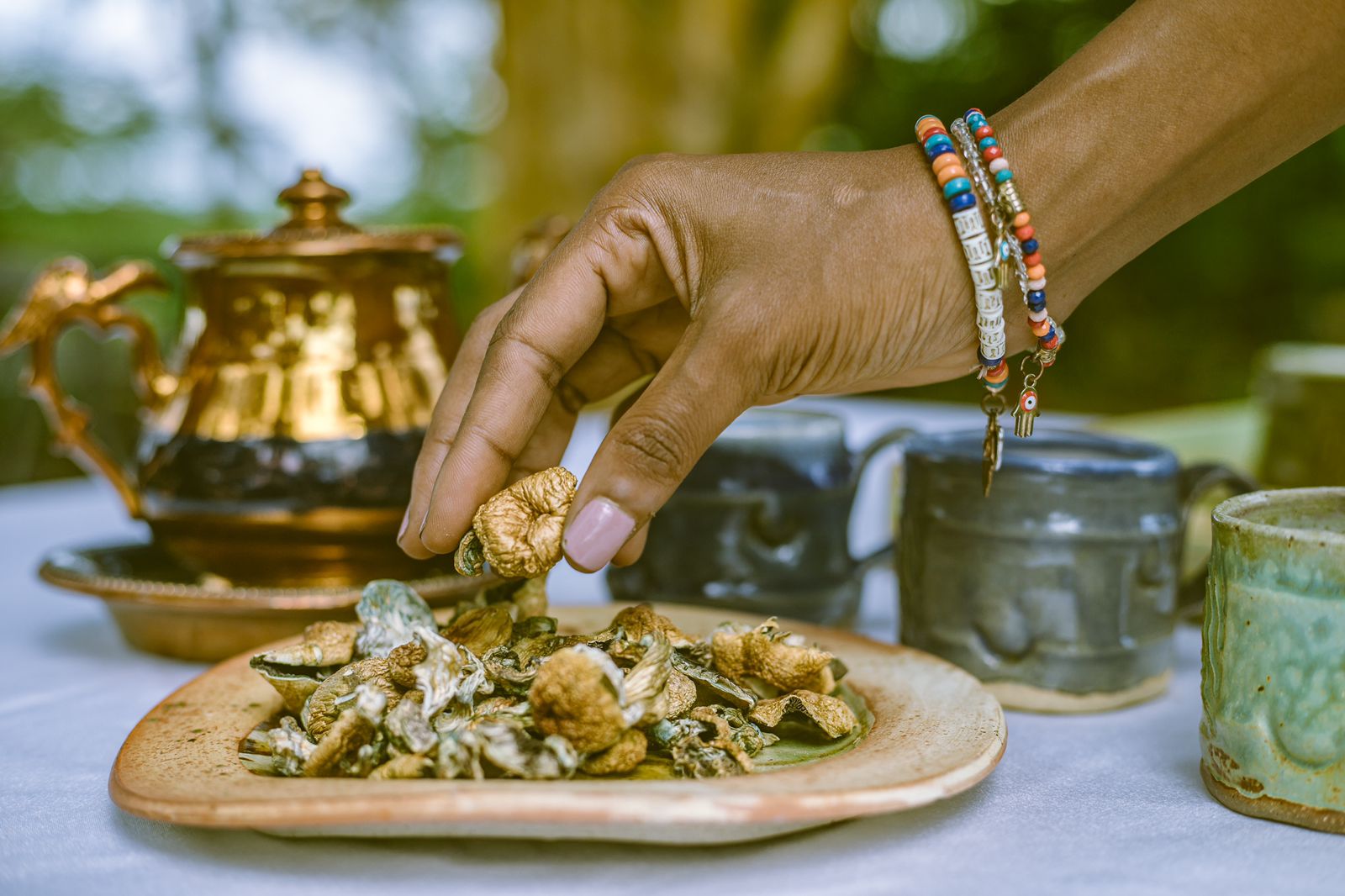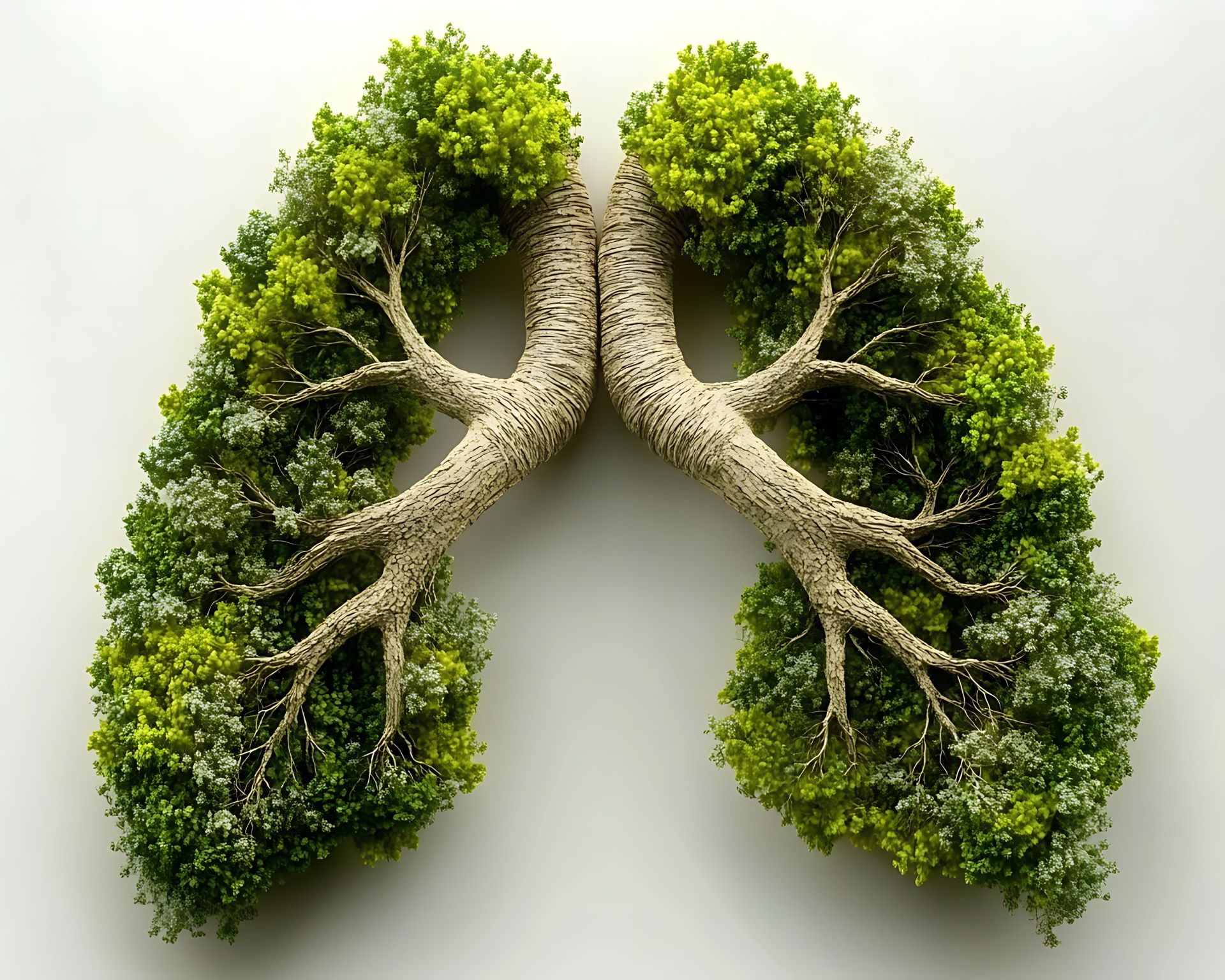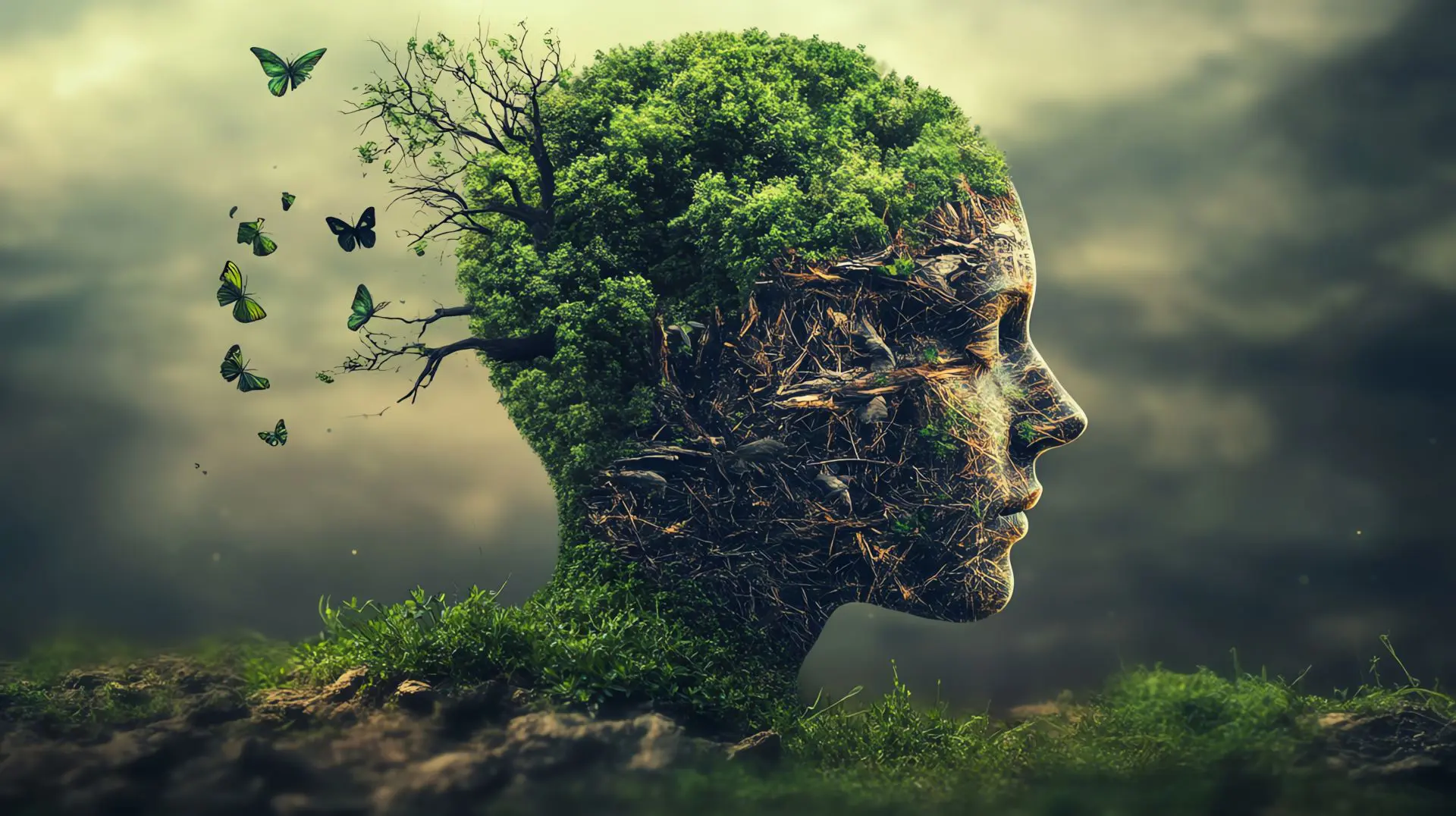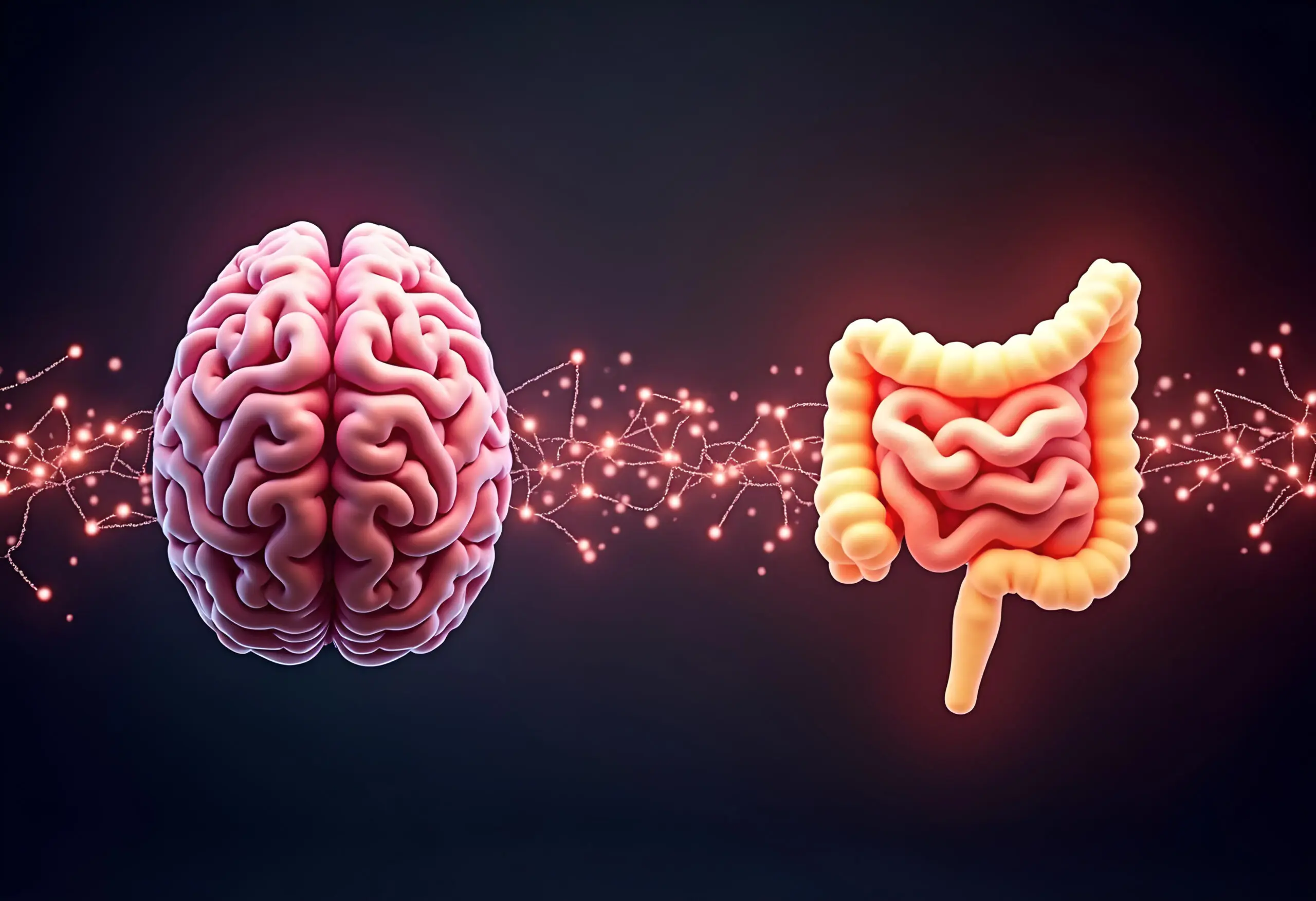
The Evolution and History of Psilocybin Mushrooms
Learn about the history of psilocybin mushrooms, their ancient usage, and their impact on various cultures. This article traces the journey of these magic mushrooms from their early cultural significance through their re-emergence in modern therapeutic contexts. We explore how psilocybin, with deep roots in ritual and ceremony, has evolved to hold new therapeutic potential for mental health and wellbeing. Far from being a relic of the past, psilocybin mushrooms continue to bridge ancient wisdom and contemporary science, providing an opportunity to honor both sacred traditions and modern approaches to healing.
Early Human Use of Psilocybin Mushrooms
For early humans, foraging for food often led to the accidental discovery of wild mushrooms with various effects. Among these, psilocybin mushrooms—found in regions like Africa and South America—held particular intrigue due to their unique psychoactive properties. Evidence suggests that these magic mushrooms were likely recognized for their effects early on, becoming woven into the lore and practices of ancient civilizations. In these regions, we find traces of psilocybin’s influence, such as mushroom-shaped artifacts and ancient art depicting mushrooms, hinting at their significance. Traditional lore around these mushrooms reflects a rich cultural relationship, positioning psilocybin as a bridge between the earthly and the spiritual, deeply embedded in early human consciousness.
How Early Humans Discovered Psilocybin Mushrooms
The heartland of psilocybin history is undoubtedly Central America, where evidence of mushroom worship dates back to at least 1000 BCE. Among the Aztecs, psilocybin mushrooms were known as “teonanácatl,” or “flesh of the gods,” a testament to their revered status. These sacred fungi were consumed during religious ceremonies and psychedelic tea ceremonies, designed to induce visionary states for divination, healing, and communing with the gods.
Spanish chroniclers of the 16th century, upon witnessing these practices, were both fascinated and horrified, often misinterpreting the rituals through the lens of their own religious beliefs. Despite attempts to suppress these ancient traditions, the use of psychedelics in ceremonies persisted in secret, passed down through generations and kept alive by indigenous shamans and healers.
Ancient Evidence of Psilocybin Use
Archaeological discoveries reveal that indigenous cultures worldwide have long recognized the spiritual and healing potential of psilocybin mushrooms. In regions of Mesoamerica, for instance, ancient mushroom-shaped sculptures and figurines have been unearthed, symbolizing the mushrooms’ role in spiritual practices. These artifacts, dating back thousands of years, suggest that psilocybin mushrooms were central to shamanistic rituals and healing ceremonies.Rock paintings and carvings in places such as Tassili n’Ajjer, Algeria, depict human figures holding mushrooms, believed by some researchers to be early representations of psilocybin use in Africa. These symbols and carvings reflect the deeply spiritual significance that psilocybin held, as ancient cultures likely saw it as a means to connect with the divine or achieve altered states of consciousness. These artifacts provide compelling evidence that psilocybin was not merely consumed but revered, integrated into practices that honored both the spiritual and healing dimensions of human experience.
Cultural Significance of Psilocybin Across Civilizations
Psilocybin in Ancient Rituals and Religion
Across diverse cultures in the Americas, Africa, and Europe, psilocybin mushrooms have played an integral role in spiritual ceremonies and shamanistic practices. In the Americas, civilizations such as the Aztec and Maya revered psilocybin mushrooms, often referred to as “teonanácatl” or “flesh of the gods,” as central to rituals designed to communicate with the divine and connect with ancestors. These sacred practices sought to transcend the ordinary, with mushrooms seen as a bridge to hidden realms and profound insights.
In Africa, certain tribes incorporated psychoactive mushrooms into healing rituals and spiritual traditions, believing these experiences could foster unity and connection with spirits. This was often achieved through the guidance of shamans, who utilized psilocybin to reach states that blended spiritual and healing intentions, forming a holistic approach to consciousness expansion.
Meanwhile, European cultures also held traditions around psychoactive mushrooms, though often interwoven with myths and symbolisms. Ancient Celtic and Norse societies likely included psychoactive substances in their rituals, with shamans and druids reputedly using mushrooms to gain spiritual insights and connect with otherworldly realms. The Eleusinian Mysteries in ancient Greece—a series of deeply sacred rites honoring Demeter and Persephone—are thought to have involved psychoactive plants or mushrooms, potentially containing psilocybin or similar compounds, inducing states of transcendence and spiritual revelation.
These varied practices highlight a universal reverence for psilocybin mushrooms as tools for healing, insight, and connection with the sacred. Across continents, psilocybin use was not merely ritualistic but viewed as a powerful conduit for communion with both the physical and spiritual worlds, blending ancient wisdom with a profound respect for the natural world’s capacity to open minds and hearts.
Indigenous Use of Psychedelics
Long before the term “psychedelic” entered the lexicon, indigenous peoples around the world were aware of the profound effects certain mushrooms had on the human psyche. The history of psychedelic mushrooms is deeply rooted in prehistoric traditions, with archaeological evidence suggesting their use in religious and healing rituals dating back thousands of years. In many cultures, these mushrooms were considered sacred, capable of connecting the physical world with the spiritual realm.
In particular, the indigenous use of psychedelics in the Americas is well-documented, with numerous tribes participating in psychedelic ceremonies. These rituals often centered around the consumption of psychedelic tea or other preparations made from psilocybin-containing mushrooms, facilitating experiences of deep spiritual significance. The participants believed these ceremonies allowed them to communicate with deities, ancestors, or the natural world, offering insights and guidance.
Psilocybin in Central America
The heartland of psilocybin history is undoubtedly Central America, where evidence of mushroom worship dates back to at least 1000 BCE. Among the Aztecs, psilocybin mushrooms were known as “teonanácatl,” or “flesh of the gods,” a testament to their revered status. These sacred fungi were consumed during religious ceremonies and psychedelic tea ceremonies, designed to induce visionary states for divination, healing, and communing with the gods.
Spanish chroniclers of the 16th century, upon witnessing these practices, were both fascinated and horrified, often misinterpreting the rituals through the lens of their own religious beliefs. Despite attempts to suppress these ancient traditions, the use of psychedelics in ceremonies persisted in secret, passed down through generations and kept alive by indigenous shamans and healers.
Psilocybin in Aztec and Mesoamerican Culture
For the Aztecs and other Mesoamerican cultures, psilocybin mushrooms—known as teonanácatl, or “flesh of the gods”—held profound religious significance. These sacred mushrooms were considered a powerful means to access divine insights and gain visions of gods and ancestors. Through ritualistic consumption, Aztec priests and spiritual leaders believed they could communicate with deities, seek guidance, and explore realms beyond the physical world.
The use of Psilocybe mushrooms in ceremonial settings was deeply embedded in Mesoamerican spirituality, not only for its hallucinogenic effects but as a revered ritual practice that aligned human consciousness with the sacred. These rituals involved elaborate rites, often conducted within temples or sacred sites, where participants would consume the mushrooms to open channels for visions, receiving messages believed to hold wisdom for the community’s wellbeing.This tradition underscores the profound relationship between the Aztecs and hallucinogenic mushrooms—a relationship rooted in respect, reverence, and a shared belief in the power of mushrooms to act as vessels for divine communion. Through these experiences, psilocybin mushrooms were woven into the spiritual fabric of Mesoamerican culture, facilitating a unique pathway to both ancestral connection and divine understanding.
Psilocybin in Western History
Introduction to the Western World
The journey of psilocybin mushrooms into the Western world began in the mid-20th century, largely thanks to pioneering figures such as R. Gordon Wasson, Albert Hofmann, and Timothy Leary. In 1955, ethnomycologist R. Gordon Wasson and his wife, Valentina, traveled to Mexico and became some of the first Westerners to participate in a psilocybin ceremony led by Mazatec healer Maria Sabina. Wasson’s profound experience with psilocybin inspired him to publish an article in Life magazine, which introduced millions of readers to the mystical and transformative potential of magic mushrooms. His account ignited widespread curiosity and laid the groundwork for Western interest in psilocybin.
Shortly thereafter, Albert Hofmann, the Swiss chemist who famously discovered LSD, isolated and synthesized psilocybin for the first time in 1958. This development allowed researchers and mental health professionals, including Timothy Leary at Harvard University, to study psilocybin’s effects in a controlled setting. Leary’s advocacy for psilocybin as a tool for expanding consciousness brought both enthusiasm and controversy, making psilocybin a prominent subject in Western discussions on spirituality, psychology, and human potential. These early explorations introduced psilocybin mushrooms to Western culture not as a recreational drug, but as a potential aid for personal transformation, aligning with ancient uses that emphasized reverence and insight.
The Rise of Psilocybin Research
The resurgence of psilocybin research in recent decades reflects a growing recognition of its therapeutic potential and its promise in the field of mental health. Early pioneers like Timothy Leary opened initial inquiries into psilocybin’s impact on consciousness and its potential to aid in treating conditions such as depression and anxiety. Despite the controversy these studies faced, they laid the groundwork for the modern era of psychedelic therapy.
Today, the Beckley Foundation and its founder, Amanda Feilding, are at the forefront of psilocybin research. By collaborating with prestigious institutions, the Beckley Foundation has advanced clinical trials exploring psilocybin’s effects on mental health, including promising studies on treatment-resistant depression and other persistent conditions. Feilding’s advocacy has helped shift public and scientific perspectives, encouraging rigorous examination of psilocybin as a therapeutic tool and highlighting the importance of safe, structured usage.The rise of psilocybin research reflects both a return to the ancient uses of psychedelics for healing and an embrace of modern scientific methods. Through these ongoing studies, organizations like the Beckley Foundation are uncovering new possibilities for mental health treatment, bridging ancient and contemporary approaches to human well-being.
How Psilocybin is Used Today
In the modern era, the use of psilocybin has undergone a significant transformation. While indigenous cultures continue to hold psychedelic ceremonies with great reverence, many people have also begun to explore these substances from a more scientific and recreational perspective. Today, psilocybin is sought after not only for its spiritual and introspective effects but also for its potential to give people tools to address their mental health and wellbeing. For that reason, at our psilocybin retreats we offer members the chance to experience psilocybin.
The revival of interest in psychedelic research has led to a resurgence of psychedelic tea ceremonies. These controlled settings– like those found at Beckley Retreats– aim to replicate the supportive and sacred atmosphere of traditional indigenous ceremonies, providing a safe space for individuals to explore their inner worlds under the guidance of trained facilitators.
Modern Research of Psychedelic Mushrooms
The history of psilocybin is entering a new chapter, marked by a burgeoning field of research into its therapeutic benefits. Studies have shown promising results in using psychdelics to address depression, anxiety, PTSD, and addiction, among other conditions, and we’re proud to work alongside Amanda Felding and Beckley Foundation as they build on over 25 years of leading psychedelic research. At the Beckley Foundation and beyond, researchers are particularly interested in how psilocybin can facilitate profound personal insights and emotional breakthroughs, offering hope for those for whom conventional options have failed.
As we continue to unravel the complex history and potential of psilocybin, it’s clear that this ancient compound holds modern promise. From its roots in indigenous ceremonies to its potential in psychiatric medicine, the journey of psilocybin mirrors humanity’s ongoing quest for healing, understanding, and connection. The future of psychedelic research may well redefine our approach to mental health, grounded in a rich history of mystical exploration and scientific inquiry.
Psilocybin in Modern Medicine
Psilocybin Therapy and Mental Health
Psilocybin therapy has gained significant attention in mental health treatment due to its potential benefits in addressing conditions like depression, PTSD, anxiety, and substance misuse. Clinical trials have shown that psilocybin, when administered in controlled, therapeutic settings, can help patients achieve a breakthrough in their mental health by loosening deeply entrenched negative thought patterns. For individuals with treatment-resistant depression, psilocybin sessions have provided substantial relief, often catalyzing new perspectives and emotional breakthroughs. These effects have been particularly promising in patients who have not responded to conventional therapies, as psilocybin appears to “reset” brain activity linked to rigid thought processes.
Psilocybin’s role in treating PTSD is also under exploration, with studies suggesting that it can allow patients to process trauma in a supportive environment without the fear and anxiety that often accompany traumatic memories. Additionally, ongoing research is investigating psilocybin’s effectiveness in treating substance misuse disorders. Evidence from clinical trials suggests that psilocybin therapy can help people with addiction shift their mindset, reducing cravings and helping to break cycles of compulsive behavior.
Organizations such as the Beckley Foundation are at the forefront of this research, partnering with universities to explore the therapeutic potential of psilocybin through rigorous clinical trials. These studies continue to underscore psilocybin’s potential in mental health, transforming treatment approaches and providing hope for those with challenging, complex conditions.
Psilocybin’s Legal Journey and Changing Perceptions
Key Legal Milestones in Psilocybin’s History
The legal history of psilocybin spans a complex journey of prohibition and gradual reform across the globe. In the United States, psilocybin was classified as a Schedule I substance under the Controlled Substances Act of 1970, which restricted both personal use and scientific research due to its categorization as having high abuse potential with no accepted medical applications. This restrictive classification halted many promising studies exploring psilocybin’s therapeutic applications, contributing to decades of legal prohibition.
In recent years, however, a global shift toward decriminalization and therapeutic legalization of psilocybin has begun. In North America, cities like Denver and Oakland led the charge, decriminalizing psilocybin possession, followed by Oregon’s groundbreaking legislation in 2020, which legalized psilocybin for therapeutic use under state-regulated conditions.
Internationally, various regions have also begun to relax restrictions on psilocybin. Australia recently approved psilocybin for clinical use in treating conditions like treatment-resistant depression and PTSD, making it one of the first countries to integrate it into a regulated mental health framework. Portugal has also decriminalized personal use of psilocybin, consistent with its broader policy of decriminalizing all drugs to focus on harm reduction and public health. In Spain, while personal use is decriminalized, public consumption and sale remain illegal, and researchers continue to advocate for expanded access.
In certain regions of Canada, psilocybin is now available to patients under special exemptions for compassionate use, particularly for those with terminal illnesses. The Netherlands takes a unique approach, where psilocybin-containing truffles are legal, providing a pathway for psilocybin use in therapeutic and ceremonial contexts.
These global shifts reflect a growing recognition of psilocybin’s potential beyond recreational use, viewing it instead as a valuable tool for mental health treatment and personal growth. Across these regions, ongoing advocacy and research are driving efforts to reshape psilocybin’s legal status, advancing a more inclusive perspective on this ancient, therapeutic substance.
Psilocybin’s Journey from Ancient Rituals to Modern Medicine
Closing Thoughts on the Legacy and Future of Psilocybin
From its ancient roots in spiritual ceremonies and healing rituals to its reemergence in modern medicine, psilocybin mushrooms have maintained a lasting presence across diverse cultures and eras. Initially revered by ancient civilizations as a conduit to the divine, psilocybin has woven itself into the fabric of both spiritual and therapeutic practices. Today, it finds renewed relevance in mental health care, where research continues to uncover its profound effects on conditions like depression, anxiety, PTSD, and substance misuse.
As psilocybin research progresses, the integration of wisdom traditions with scientific inquiry presents an opportunity to honor its history while expanding its applications. No longer confined to ancient rituals or clinical trials alone, psilocybin stands at the intersection of spiritual connection and modern mental health treatment, representing a holistic approach to well-being. The future of psilocybin holds the promise of bridging these worlds, allowing us to understand and respect this powerful substance’s full potential in fostering both personal growth and collective healing.


